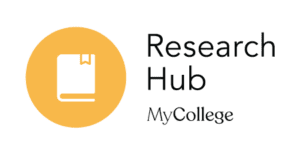Understanding the ‘how’ of learning from cognitive science: What strategies can help students retain and recall information more successfully?

An understanding of the thinking processes that pupils go through is helpful, from planning lessons to delivery. Literacy tasks, by their very nature, demand focus. Therefore, a consideration of working memory capacity and cognitive load can help you to plan tasks with improved accessibility for all pupils.
Retention and recall rely on understanding the information presented. Presenting too much information at once can result in cognitive overload (Sweller, 1998), meaning information is unlikely to be retained.
What does it mean?
Research into working memory, capacity and effective storage of information has identified several strategies to support the successful storage of new information (Alloway and Alloway, 2015). Chunking information leads to schemas which makes retrieval easier. Limiting the amount of information and then repeating that information reduces the cognitive load and strain on working memory, thus increasing the chances of it being retained.
Long term memory is informed by the working memory – if the working memory is overloaded, this results in poor retention of information and can lead to problems with retrieval. Learners with good retrieval skills use effective strategies (see below) almost instinctively, but for those that find retention and retrieval a challenge, these skills need to be taught.
Action points for teachers
It is useful to factor into planning a regular check on the amount of information being taught at any one time. What are the absolute essentials? Ensuring these are repeated and understood fully will allow a stronger foundation on to which detail and related content can be built.
It can be useful to think of how information is processed in terms of different phases, a little like a computer, although, in reality, our brains are much more complex than this.
The ‘input’ phase
If searching for something in the endless cavern of the internet is to be successful, the search terms need to be accurate, concise and to some extent understood by the researcher.
Strategies for the input phase:
- introduce new information within the context of existing knowledge
- add supporting visuals and repeat key words
- dual coding (Paivio, 1971) a strategy for reducing the cognitive load, involves linking a visual to a piece of text. The picture needs to be simple and colour should ideally only be used if it supports understanding
- begin with discussion and exploration of key words.
The ‘storage’ phase
There is nothing like a tidy desktop or a well ordered bookcase, and the memory is similar in that encouraging order for learned material facilitates fast retrieval.
Strategies for the storage phase:
- discuss and create schema for learners to use in order to organise the information they are given
- categorise words and information when teaching new additions
- discuss and make links between new information and existing information
- encourage learners to draw on their background knowledge (but remember to check for misunderstandings)
- embed the knowledge through repetition and measure their understanding at regular intervals. This is known as interleavingAn approach to learning where, rather than focusing on one piece of content at a time (known as blocking) then moving on to the next, students alternate between related concepts – for more information on interleaving, visit the Learning Scientists.
Output phase
This is reliant on the previous phases, but should, if ‘inputted’ and ‘stored’ correctly, be relatively accurate and quick.
Strategies for the output phase:
- use familiar language and keep it consistent
- keep recall tasks to two or three pieces of information at one time
- use visuals to trigger recall as well as verbal cues
- praise accuracy and successful recall
- reinforce when a strategy of recall is applied successfully.
Weave in repetition and develop a vocabulary that supports an awareness of working memory. Add hooks to the information you want them to remember. The more connections you can explicitly make, the easier it will be to remember.
The Driver Youth Trust is a charity committed to improving the outcomes of young people who struggle with literacy.
Want to know more?
Alloway TP and Alloway RG (2015) Understanding Working Memory (2nd edition). London: SAGE Publishing.
Education Endowment Foundation (2018) Metacognition and self-regulated learning. Guidance report. Available at:
https://educationendowmentfoundation.org.uk/public/files/Publications/Metacognition/EEF_Metacognition_and_self-regulated_learning.pdf (accessed 27 November 2019).
Paivio A (1971) Imagery and Verbal Processes. New York, NY: Holt, Rinehart and Winston.
Sweller J (1998) Cognitive load during problem solving: Effects on learning. Cognitive ScienceThe study of the human mind, such as the processes of thought, memory, attention and perception 12:
257–285. See also this explanation of cognitive load: https://www.instructionaldesign.org/theories/cognitive-load/










